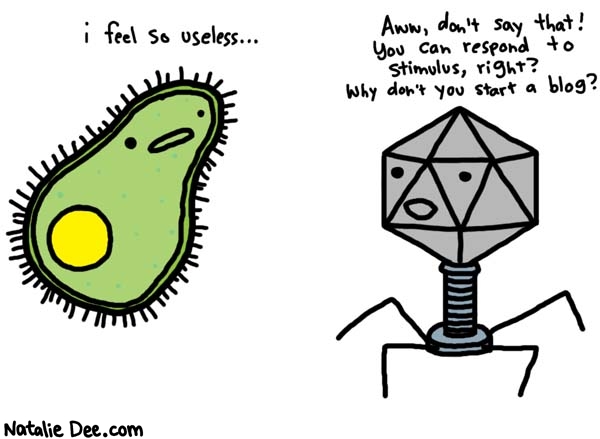Happy Holidaze!
 Tuesday, December 11, 2012 at 6:12PM
Tuesday, December 11, 2012 at 6:12PM Last week I was privileged to speak at AIGA Baltimore's "Blend" event. The topic was Holiday Cheer (and client relations) and it was SO much fun. To everyone that turned out to "cheer" me on, thank you! And, if you weren't able to come, here is what I had to say (more or less!).
-------->
I know I am supposed to be here to talk about client relationships, branding, and designing the perfect holiday card.... yadda yadda yadda. I'll get to that. FIRST I want to use this forum to air a grievance I have with my husband (who, consequently, is also a designer...)
As a native Baltimore girl, I think I can tell you on some authority that I know how to do Christmas right.
According to my earliest memories, the first step is to replace your summertime painted screens to ones with more wintry subject matter (if you are lucky enough to have a second set). 
Then, you put baby Jesus next to the statue of the blessed mother you already have in the front window -- unless you want to change the entire tableau to a manger scene (this is best if it lights up, too).

Finally, you decorate the house -- the ENTIRE HOUSE -- inside and out with all manner of colored lights, animatronics, and things that play carols when you walk by. An over-arching theme is nice but not necessary. Really more is MORE here. The brighter, more colorful, more fantastic in every sense of the word the better. This isn't my house. I just wish it was... My history is the source of the holiday magic that runs through my blood, and what I think gives me the authority to tell you how to make your holidays more jolly. (Actually, I think I could give John Water's a run for his money when it comes to documenting Christmas Baltimore-style).
This isn't my house. I just wish it was... My history is the source of the holiday magic that runs through my blood, and what I think gives me the authority to tell you how to make your holidays more jolly. (Actually, I think I could give John Water's a run for his money when it comes to documenting Christmas Baltimore-style).
However, for better or worse, I married a great guy who's only flaw is that he is not from Baltimore. Some things he just doesn't get. He thinks colored lights are gaudy. He point outs that I no longer live in Highlandtown, and he asks silly questions like "what will the neighbors think?"
He only allows white lights in front of the house. Not one animatronic singing reindeer anywhere. Not even an inflatable snow globe with the "snow" blowing around inside.
I'll concede the house is lovely and very tastefully decked out, but not once have I heard a single soul shout with glee when the solar candlesticks start to softly glow from the window.
Just sayin'.
So... here is the deal. I will tell you ALL of my secrets on creating memorable holiday greetings for your clients, BUT you have to promise to mention to my guy that maybe next year a colored bulb or two might not be a bad thing. I'll really be your friend if you help me make the case that painted screens are NOT just a colloquial oddity but a true cultural treasure that we need to help keep alive...
Okay.. here goes.
-------------
Beyond my personal cultural predilections, my professional experience with the holidays is fairly extensive. My very first job was in a craft store and during the busy holiday rush (starting July in the crafting world) I learned to make bows, swath garlands, and add glitter to anything that stood still. Following that experience, my first internship was with the Becker Group, a company whose tagline is "Making Reindeer Fly." I was one a few MICA "visual communications" majors hired to help illustrate boards of proposed holiday decor for clients (malls, casinos, amusement parks) during the summer busy season.
I cannot tell you how much I loved that job. Every day I got to decorate for the holidays. My desk was decorated with sleigh bells bigger than my head. The walls in the studio were covered with murals of the north pole. It was fantastic.A Becker Group "Santa Area" design
Following my internship at Becker, and much to my delight, Junior year my class participated in a holiday card contest for Bindagraphics. Though only one card was required for class, I created two and proceeded to win both 2nd and 3rd place. (All I'm gonna say about not winning first place is that I WAS ROBBED.)
Senior year I held another internship, this time an agency. There again I held onto the holiday duties. As "head intern" it was my job prepare the ambitious annual holiday gift -- wine bottles for each client (and there were a LOT of clients) which had to be soaked, scrubbed, and relabeled with a clever design created by one of the agency's designers (a task I am sure they each vied for passionately). Finally, they were each packed carefully in little wine-bottle sized crates tucked in with curly woodshavings and a matching card.
This. Project. Took. All. Month. Not to mention the fact that I got splinters where the sun doesn't shine from sitting amongst all the curly wood shavings. Nevertheless, I enjoyed that little bit of holiday "magic" breaking up the day-to-day of ordinary comping, office organization, and otherwise trying to make myself as useful as an intern could be.
Later on in subsequent (non-intern) studio jobs the creation of the holiday gift was always my turf. As such, I was responsible for a wide range of messes and successes. The most notable mess was perhaps the Jelly Bean Fiasco of 1999 -- involving multiple round color coded tins, much hand cutting of circular logos, a lot of color sorting of beans (to coordinate with the logo), and finally a jelly-roll style acetate/holiday card/bean tins package. All together, the card and packaging and color coded confections looked great. However, despite many many many hours of work all it literally amounted to was... a hill of beans.
Another year, inspired by the then-new popularity of Flash I created an on-line animated card at my boss' request who was looking to push the company's digital services. The reception of the animation was mixed -- half of the clients sent the link loved it (the other half could not see it at all...). Since we did pick up work from it, it was deemed an overall success.
The first year I worked for myself I had a lot of time on my hands and not a terribly large roster of clients. With both a newborn baby and a newborn freelance practice -- if time was money than my time came rather cheap. During that first year I added many new skills to my roster; they most notably included swaddling a colicky baby, making really good soup (the trick is to use a parmesan rind to flavor the broth) and crocheting. That year I gave everyone that worked with me a handmade scarf. It was something I made, something useful, and something that I hoped showed the recipient that I really was thinking of them and that I was GRATEFUL for their presence in my life. Without exception, everyone I gave a scarf to seemed genuinely pleased (or they were just really nice).
Later, as my business grew and I got more serious I found I wanted a way to keep myself on the desk (or at least in the office of) a client or prospect. To do so, I created cleverly "branded" office supplies that were a paper-cut above the standard swag. These included a travel mug that looked like a paper cup (aptly called "I am not a paper cup") which I re-packaged with a paper sleeve that was a visual pun on starbucks' sleeve. Instead of listing types of drinks it had design services, it even warned people to be careful as the "concepts were hot." Staple-less staplers were another popular item, promising clients that HDO would help them "Keep it together and look good." Most popular of all were the hedge hogs. I gave them more than six years ago and they are still proudly holding their paper clips in my client's offices.
Overall, these items have been very popular -- what I learned is pretty unsurprising (and what I am sure you already know) -- the more unique, tasteful, and useful something is, the more staying power it has.
-------------
Suffice it to say that over the years I have given and received a pretty wide variety of corporate gifts.
The following is a collection of what I think encompasses the range of "traditional" holiday greetings. I'll share my qualified research on their effectiveness as well as my personal experience and some blatantly unbacked opinions (as well as the opinion of any colleagues I canvassed who were willing to share their thoughts with me). 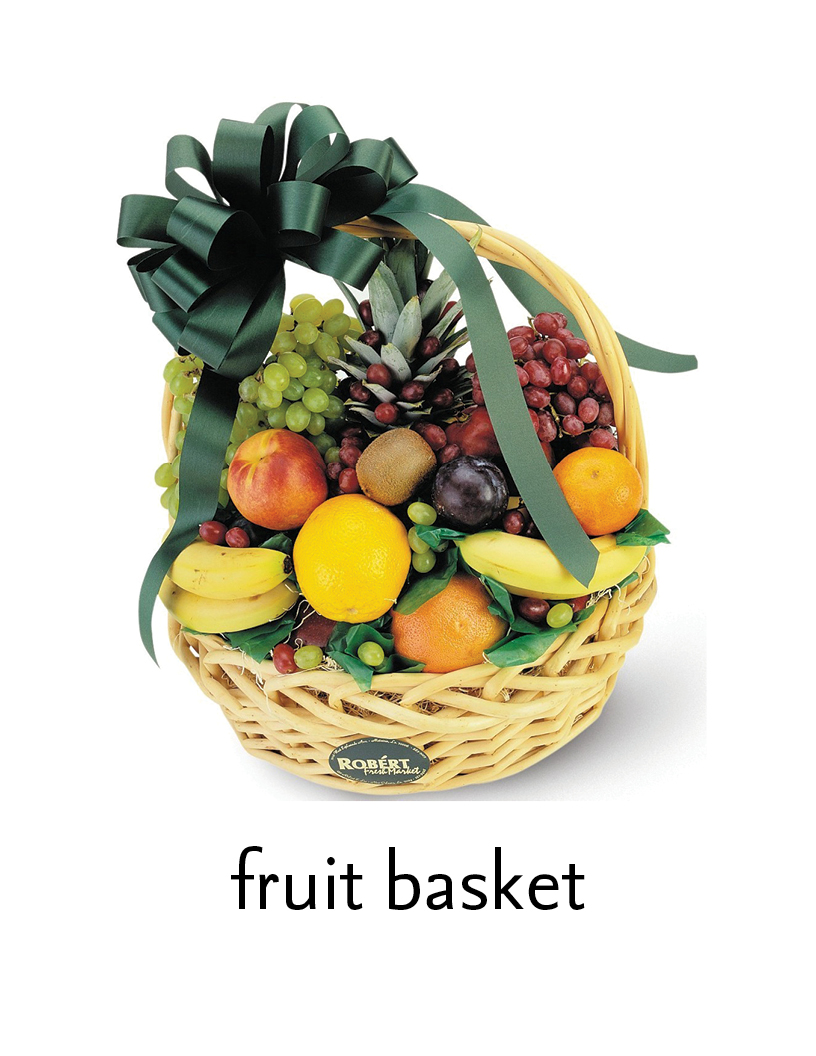 Fruit basket: Though this has a lovely Go BIG or GO home, effect and can certainly convey the idea that you are concerned for your client's health I often wonder, when I see these, how many people actually EAT the fruit, or are simply inspired to go and find the cookies... (which are usually sitting next to the fruit basket, creating a guilt complex for the recipient that I doubt they will ultimately thank you for...)
Fruit basket: Though this has a lovely Go BIG or GO home, effect and can certainly convey the idea that you are concerned for your client's health I often wonder, when I see these, how many people actually EAT the fruit, or are simply inspired to go and find the cookies... (which are usually sitting next to the fruit basket, creating a guilt complex for the recipient that I doubt they will ultimately thank you for...)
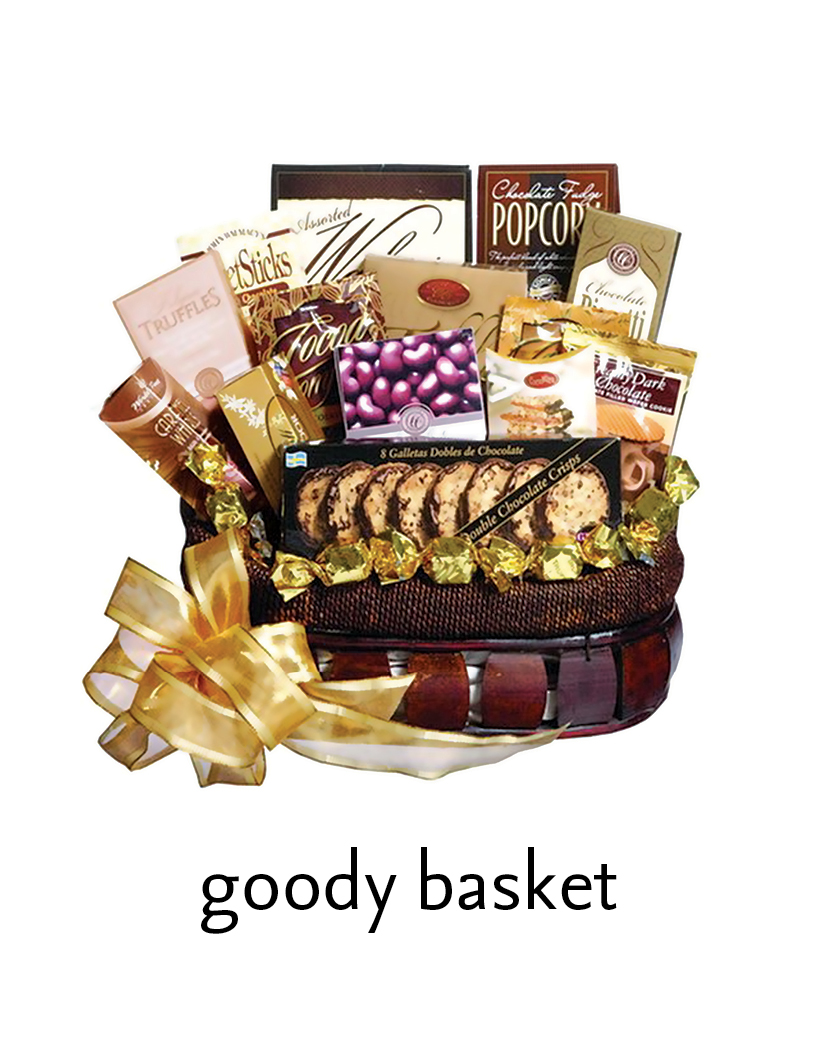 Sitting next to the fruit... the Goody basket! One year I got so many of these that I simply put them back into circulation. That's right. I regifted the gift basket. No, I am not proud of this but since we are taking a good hard look at the holidays I thought it best to come clean. I have a feeling I am NOT the only person to have done this...
Sitting next to the fruit... the Goody basket! One year I got so many of these that I simply put them back into circulation. That's right. I regifted the gift basket. No, I am not proud of this but since we are taking a good hard look at the holidays I thought it best to come clean. I have a feeling I am NOT the only person to have done this...
Nevertheless, my best advice if you choose to gift (or regift) one of these is to send it early. You want to be amongst the first to send holiday treats in order to increase your probability of being appreciated and remembered rather than simply engendering the "oh crap... not more food" response before being added to the communal office pile.
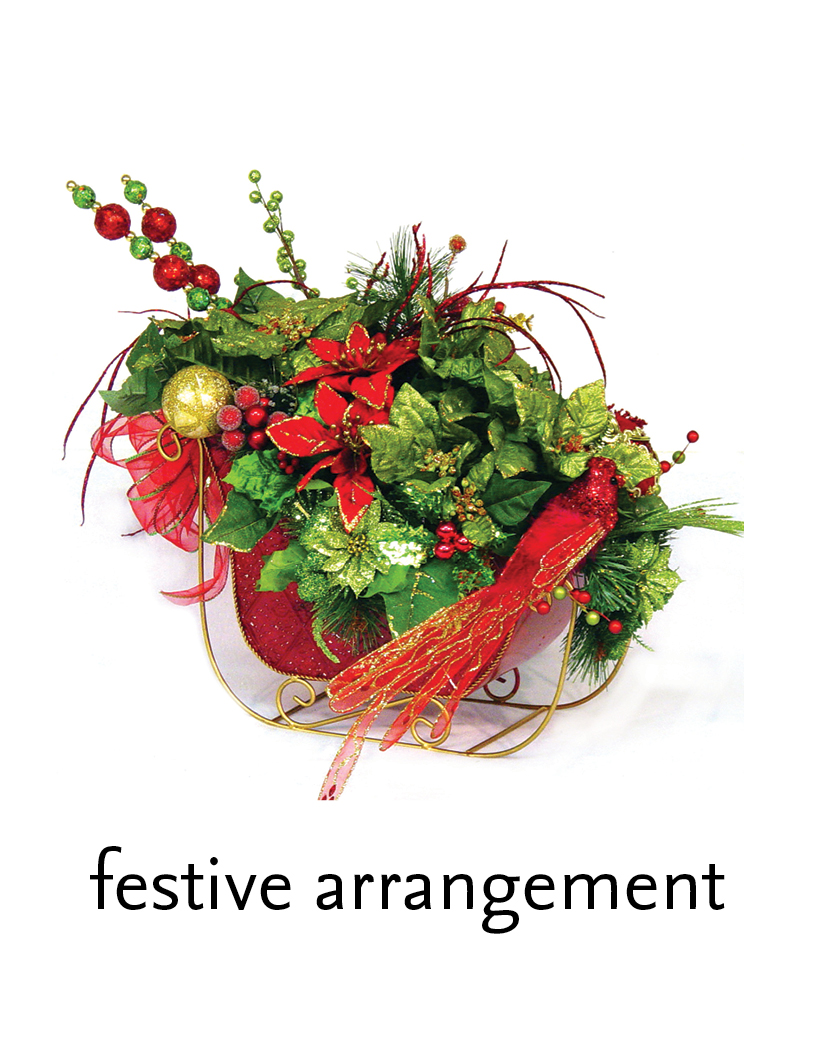 Festive Arrangement: Now, I love flowers as much as the next girl but I can honestly say that I have never gotten one of these that I like. I usually receive them with a sense of guilt since I know I will never give it the place of honor at the holiday table that it so clearly seems intended for. Maybe it is just because I am a snob (more honesty!) but I can't imagine presuming that I should pick the decor for someone else's home. If anyone wants to buy me holiday flowers -- stick to greens or white poinsettias...
Festive Arrangement: Now, I love flowers as much as the next girl but I can honestly say that I have never gotten one of these that I like. I usually receive them with a sense of guilt since I know I will never give it the place of honor at the holiday table that it so clearly seems intended for. Maybe it is just because I am a snob (more honesty!) but I can't imagine presuming that I should pick the decor for someone else's home. If anyone wants to buy me holiday flowers -- stick to greens or white poinsettias...
Coffee. The perfect gift for any occasion. Unless you don't drink it.. or only do frappa-mocha-latte-chinnos... in which case, I don't ever want to know that about you.
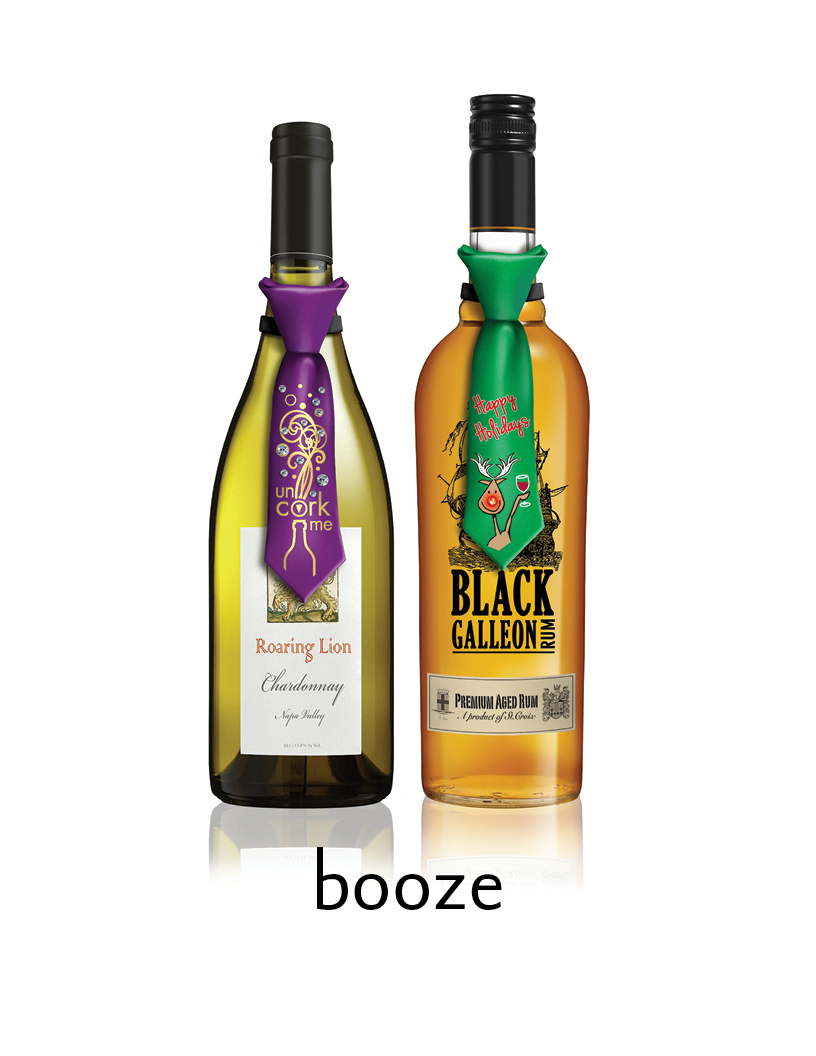
Booze: Also perfect... I mean no... Obviously the intention is to wish your client a very merry holiday. Of course, you could also be implying that your clients drive you to drink... or maybe you know you drive them to drink. I don't need to know about your personal vices.

Corporate swag: Sadly, no matter how cool the mug, notepad, pen or stressball is, I have a feeling that the office cupboards already overfloweth.
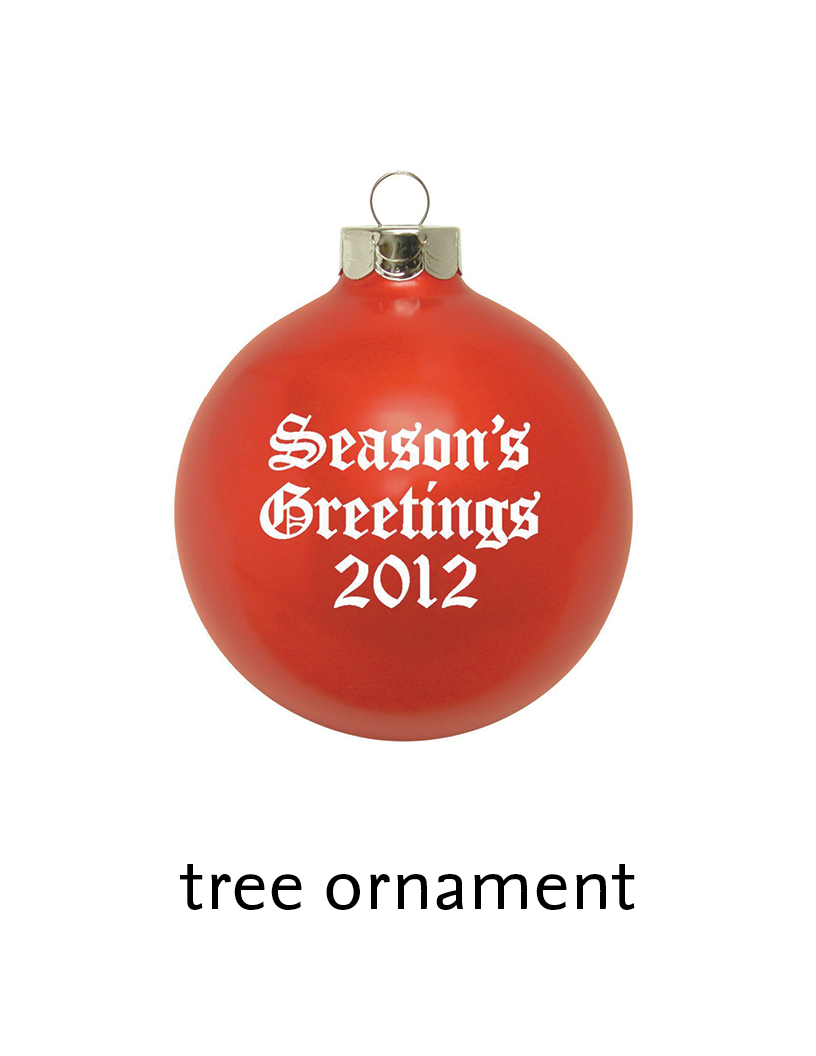
Tree ornament: Elegant and festive... or culturally insensitive? I honestly think "it depends" is a good answer here. If it is more an objet 'd art -- like an actual handmade something by a real artist -- then it can transcend the holidays and become something anyone would want as a decoration in their office. Nevertheless, I would tread lightly here unless you REALLY know your audience.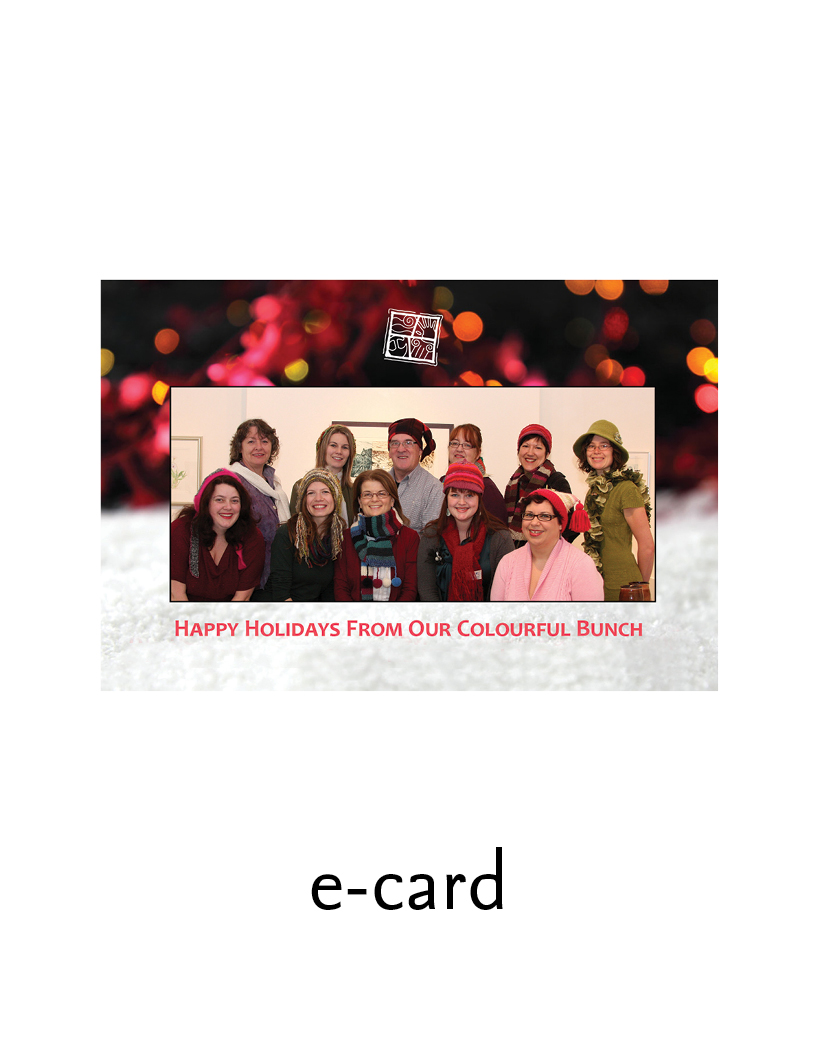
E-Card: through poling my associates and trolling the internet for advice and opinions on creating e-cards I found that most consider them to be, at best, somewhat forgettable. Additional problems include the fact that some email software automatically block images, and especially at this time of year I have my doubts about whether or not most people would take the time to open an outside link.
I do still think that there are circumstances in which they can work, or even when they are the best option. For example, if you are a tech-focused company it makes sense to use tech to get your greeting across. You just need to make sure that it passes the easy-delete test. Regardless of whether we are print or digitally-focused designers, chances are you will be called on to design them at some point.
So, here is the best advice I could find on how to make them successful.
- personalize your emails for your clients. (no mass "dear client" emails, please)
- make your design as unique and/or interactive as possible (duh)
- add some humor: the most interesting thing I learned, was that in 2009 Hallmark's Business Connections division conducted a survey which revealed that 62% of customers expressed interest in receiving humorous cards from companies that they do business with. However, the vast majority of business e-correspondence -- not very funny. It seems to me that this prominent "lack of humor" presents an opportunity to be more unique and memorable than the competition.
 Print Card: The worst offenders in this category are the mass produced cards so laden with foil you don't just get a paper cut opening them, you end up needing a set of stitches.
Print Card: The worst offenders in this category are the mass produced cards so laden with foil you don't just get a paper cut opening them, you end up needing a set of stitches.
However, a card that is beautiful and meaningful, or a greeting that carries with it some gift or token that has a purpose is another thing entirely. After all, you're a designer, an illustrator, a photographer, an artist. You MAKE things. Your clients come to you to provide them with your creative skills... so it probably stands to reason that they LIKE the things you make. Additionally, they look to you to craft ideas that resonate and provide them with a medium for their message that won't get lost or tossed..
So just do that. (No pressure.)
In 1979 the now-venerable Steven Heller edited his first book, titled "Artists' Christmas Cards." At that time, he was art director of the New York Times and as such received a prodigious amount of seasonal greetings from artists including Edward Gorey and Maurice Sendak. Once he let it be known that he was in the process of creating a book on holiday cards he scored even more cards from ever more impressive artists (personally, I think the book could be viewed as a rather passive aggressive premise to go about feeling more appreciated during the holidays, albeit a very impressive premise. Honestly, I'm a bit jealous I didn't think of it myself... I wouldn't mind getting a flood of holiday cards from really cool artists..).
Anyway, Heller's intention with the book was to show that an artist could "transcend the commonplace" and make amazingly unique cards. But, forty years later, in a 2009 NYT article on the same topic Heller points out that, similar to tastes holiday music, people LIKE the familiar when it comes to their holiday cards. This may be the one and only case in which we don't want to go too far outside of the box to express our creativity. Heller states that, "the novelty is in the ways in which artist who are touched or amused by the holidays reinterpret their signs, symbols, and sentiments."
In other words, don't change the medium (in this case the card). It is your take on the message that counts.
So, maybe the best advice I can give you tonight is that a traditional card, or card and gift, don't need to be re-worked. Instead, what we each need to work on for ourselves as artists and individuals is what we want the meaning of our holiday message to be; and then do what we do best -- find the most interesting, creative and appropriate way to get that meaning across.
Personally-- in recent years my focus has changed. Currently, my client focus is almost entirely non-profit because I have discovered that I am happiest when I am helping to prosper the mission of places I believe in.
In addition my goal, most days, has been to be grateful -- a sentiment that definitely encompasses my client relationships. The best way I can think of to express that as a holiday message is through the act of "paying it forward." In the past few years I accomplished this either by buying gifts created by fine artists in an effort to further and support their practice, or by making a donation to a charity and sending my clients a smaller gift with a note letting them know of the donation made in their honor. (I still send a card and gift and it still has a concept -- Altruism be damned, I'm still a designer and want my clients to remember how clever and chic I am! )
For both my personal and professional practice, the concept of gratitude is the message that fits the medium of the holidays. Carrying that out has provided me with endless ideas and outlets. To my children's teachers and therapists I give gift cards for manicures to show them that I appreciate their "helping hands." For my mailman, trash and recycling guys and the kids' bus drivers I give Dunkin' Donuts gift cards because I think everyone deserves a good cup of coffee and a munchkin or two on a cold morning (I know I do). And my favorite -- within my close circle of friends we have stopped giving one another holiday gifts and instead go absolutely crazy playing Santa for an adopted family every year for the past 5 years.
Steven Heller is right (forty years later). Finding your message -- the way the holidays inspire, affect, amuse you, or bring you joy -- is the most important part of crafting your message to your clients through your holiday greeting. Once you figure that out, I promise the rest is easy. It can even be a true joy that you look forward to every year, and that helps you let your clients know you not only recognize their contribution to your success, but you make them a part of your own personal celebration of this "most wonderful time of the year."
So, Charlie Brown, the true meaning of Christmas can't be found in the size of our fruit baskets, or through copious amounts of candy or coffee or wine. Not even in clever, interactive and hopefully funny e-cards, or beautifully produced handmade print pieces.
The truth is that, as professions go, we are pretty lucky people. We are creative and clever and get to play with ideas and spend our days (and some late nights) making things -- sometimes things that are beautiful and clever and wonderful and that bring us joy -- and we have our clients to thank for that. We have to tap into that joy, figure out why we do what we do; whether it is to change the world through innovative uses of technology, through our commitment to social design, or just to making the world a more beautiful place one project at a time, and find a way to communicate that message with gratitude to the people that help us do what we do and be who we are. During the holidays we are all called to be our best selves, and what could be better inspiration than that?

